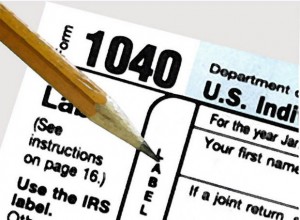Year after year, taxpayers continue to overpay the Internal Revenue Service. In fact, statistics from the IRS show that almost 80 percent of U.S tax filers receive a refund check for excess taxes paid or withheld each year.
With the average tax refund for 2015 expected to rise to nearly $3,295, taxpayers should be careful about how they spend their refunds. Reviewing the options noted below may help ensure that your refund check is earmarked in a way that can improve your financial position this year.
Build a rainy-day fund
Unfortunately, many Americans have insufficient emergency funds available. In fact, according to Bankrate.com, nearly 25 percent of survey respondents reported that they have no cash reserve at all. While the benefits of an emergency fund are undeniable, many people find that unexpected expenses get in the way of building a healthy savings account. You've probably heard the term - pay yourself first. Well, earmarking a portion of your tax return toward an emergency cash reserve is a great way to accomplish this. From an unexpected health expense to the loss of a job, maintaining at least 6 months of expenses (9 months is even better) for unforeseen bills may help provide a solid safety net.
Pay down high-interest debts
Generally speaking, there is an inverse-relationship between cash reserves and the amount of consumer debt a family has. In other words, too few cash reserves often lead to the use of debt to fund unexpected expenses. With the national average rate for a variable credit card approaching 16 percent, using a portion of your return to pay down excessively high debt can help speed up the process of becoming debt free while reducing significant finance charges. Consider paying down the highest-interest debt first while continuing to make minimum payments on any lower interest debt you have. This may also help reduce interest costs in the long run.
Invest in yourself
Making an investment in the improvement of your skills, training and education may open new doors and opportunities for your career. Do you need to improve your marketability or earnings potential? Consider using a portion of your tax return to take classes toward certifications, degrees or other educational opportunities at your local college, university or technical school. Consider speaking to a career counselor or someone in your related field to ensure that the investment will translate into increased earning power in the future. This can be one of the most powerful ways to improve your financial position.
Open a college savings plan
If you are not planning on investing in your own education, consider earmarking your return toward an investment in your child's education. While implementing a monthly savings plan toward college is often advisable, making additional lump-sum contributions from your tax return may help speed up the achievement of this challenging financial goal too. Consider researching the benefits of a 529 plan as they can be one of the most effective ways to build education savings. Funds used for qualified education expenses from a 529 plan grow federally tax-free. Keep in mind that if the funds are not used for qualified education expenses, a 10 percent penalty and tax on the gains will be levied on the account.
Invest in a tax-deferred retirement account
Allocating your tax refund toward your retirement goal is one of the few strategies that may allow you to use this year's tax return to potentially increase next year's return too. From an employer provided 401(k) plan to an IRA, consider boosting your retirement savings toward maximum contribution thresholds. For 2015, taxpayers can save $5,500 in a traditional or Roth IRA ($6,500 if over age 50). Since maximum contributions for IRAs alone may not be sufficient, be sure to take advantage of 401(k) plans available as they allow up to $18,000 ($24,000 if over age 50) in tax advantaged savings. Consult with your financial or tax adviser to determine whether a Roth or Traditional plan makes financial sense for you.
Review insurance needs
When was the last time you reviewed your life and disability insurance needs to ensure that it was sufficient? According to LIMRA, nearly 27 percent of consumers believe they have an inadequate amount of life insurance coverage and only 50 percent of those 25-64 have life insurance. If a family member or loved one relies on you for financial support, it is prudent to review your options and purchase additional coverage where needed. Using a small portion of your return to acquire coverage can help protect your beneficiary's financial future.
Adjust your withholdings
While receiving a large tax return may seem like a good idea, it is nothing more than an interest-free loan to the IRS. Sure, the forced savings can be beneficial for those that might not have the discipline to save. However, for many taxpayers, adjusting withholdings can reduce your refund while freeing-up cash flow that can used on a monthly basis toward other goals and expenses you may have. Be careful though - withholding too little can result in owing the IRS and they usually do not lend money interest free. Consider speaking to your financial and tax advisers to determine which approaches are best for you.
Kurt J. Rossi, MBA is a Certified Financial Planner, Practitioner & Wealth Adviser. He can be reached for questions at 732-280-7550, kurt.rossi@Independentwm.com or www.Independentwm.com. LPL Financial Member FINRA/SIPC.










